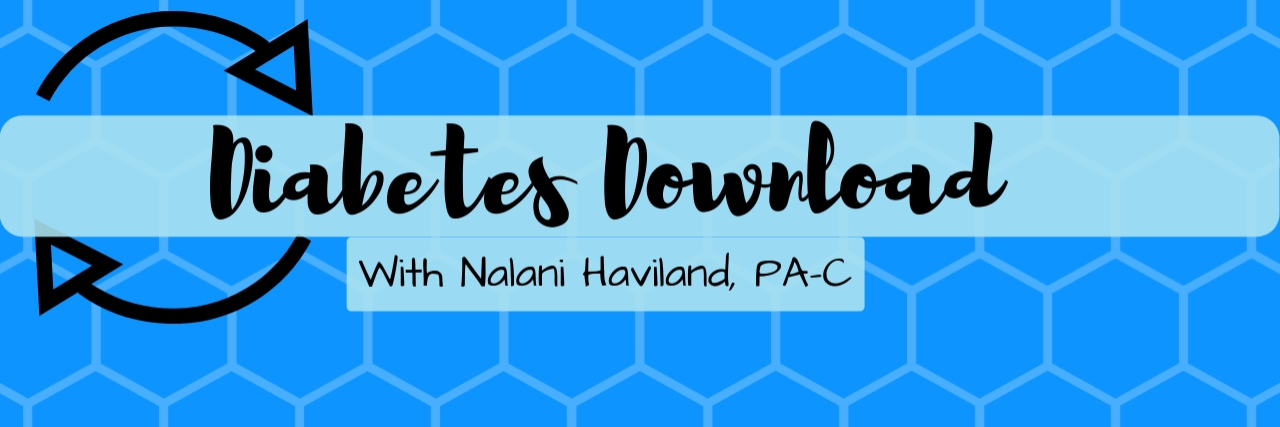Diabetes Download: How Can I Decrease the Cost of My Medication?
In Diabetes Download, Nalani Haviland, a board-certified physician assistant and diabetes expert who has type 1 diabetes herself, answers the Mighty community’s questions.
Editor's Note
Diabetes medications can be expensive, and navigating insurance and pharmacies can be confusing. Today, Nalani Haviland, PA-C, shares some ways you may be able to lower your medication costs.
This column is solely for general education and information. It is not intended to provide any medical advice and cannot replace or be a substitute for your relationship with your healthcare provider. Always talk to your clinician for any issues or questions.
The Mighty community asked: “Diabetes is expensive! Any tips for decreasing medication costs?”
I work as a physician assistant at a rather large endocrine practice in San Diego County. We receive over 400 calls a day from our patients… that’s right, I said 400! Now, that’s a lot. I was not surprised to recently learn that over half of those calls are related to medication costs or/and insurance coverage. Finding the right medication at the right cost can be a long process, but did you know that we as patients can fast-track this?
I’ll let you guys in on a little secret… clinicians have no idea how much your medication will cost or whether or not it will be covered by your insurance. The only way for us to find out is to send your prescription to the pharmacy and see what they come back with. You can find out this information easily and in doing so, you may be able to get your medications faster and often for cheaper prices.
The first step to this process is obviously knowing which medication you are being prescribed. Ask your clinician or pharmacist for a list of alternative medications in the same drug class (you can also look this up online) you could take. Next, Google your insurance policy’s medication formulary and identify those medications. For price purposes, you want to find the medication that is on the lowest tier. The Fingertip Formulary app is also a great tool for identifying covered medications. This process can be useful even if the medication originally prescribed is covered. There may be a similar medication on a lower tier that will cost you less. This should be done for all medications, even insulin. I want to emphasize that finding this information is not your clinician’s job… this is yours! I think it’s important for us PWD to take charge and remember that we are the ones managing our disease.
Let’s talk about some other tips for finding the most cost-effective medications.
First, shop around! Copays can be different at different pharmacies and many companies offer discount coupons. The GoodRx app is very useful for locating the best medication price. Also, don’t ignore the small independent pharmacies — they will often offer medications at cheaper prices than the chains.
Second, sometimes it’s better to skip the insurance. This mostly applies to meds like antibiotics, but it’s worth a shot. Sometimes copays are higher than the price of the medication itself.
It is often less expensive to use a mail order pharmacy or club store pharmacy and it can be worth it to find out if you qualify for a patient assistance program. The Partnership for Patient Assistance Program website is a great place to see if you qualify, and it’s free.
I hope this helps and remember… you are in charge of your own health! Good luck!
Glossary of Terms
Type 1 Diabetes: A chronic condition that occurs when the pancreas produces little to no insulin. As a result, the body is unable to properly process glucose for energy. It is primarily managed with frequent blood glucose monitoring, diet, exercise, and either insulin pump therapy or multiple daily injections.
Type 2 Diabetes: A chronic condition resulting from insulin resistance and/or an inadequate response to insulin secretion. This results in the body’s inability to properly process glucose. It is managed with frequent blood glucose monitoring, oral or injectable medications, diet, exercise, and sometimes insulin.
Blood Glucose: Another name for blood sugar. Having blood glucose levels that are too high or too low is the hallmark sign of diabetes.
Insulin: A hormone produced by the pancreas. Insulin allows for the regulation of blood glucose and without it, the body cannot process glucose for energy. People with diabetes must get their insulin either through injection or insulin pump therapy.
Diabetic Ketoacidosis (DKA): A complication of uncontrolled diabetes caused by an insufficient amount of circulating insulin. This usually leads to high blood glucose levels and a buildup of blood ketones, byproducts of the breakdown of fatty acids. Untreated diabetic ketoacidosis can lead to coma and death.
PWD: Person with diabetes
Follow me on Instagram at @diabetes_pa, on YouTube, and on my website.

